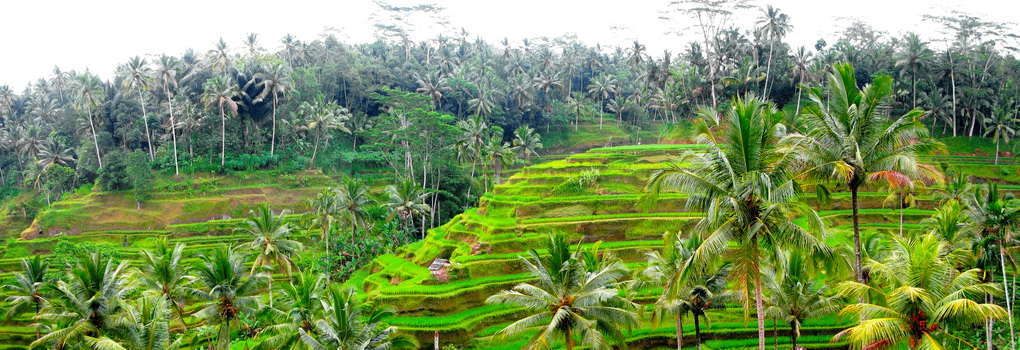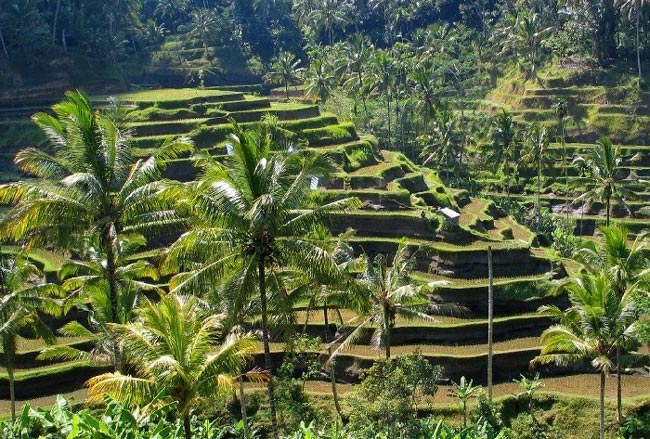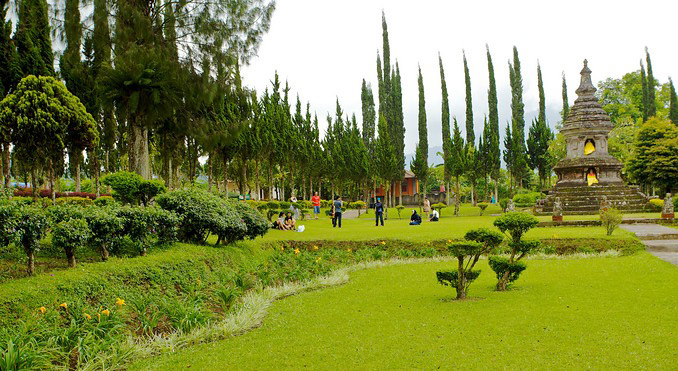Subak farming system in Bali
The United Nations Science, Education and Cultural Organization has recognized Indonesia's Subak Cultivation System as a World Natural Heritage in 2012.
Subak farming system in Bali, Indonesia - World natural heritage
The landscape of Bali's farming system consists of five terraces, temples, and irrigation systems up to 19,500 hectares. In it the temples are the focus of a system including water, canals, spillways, called subak . According to Indonesian documents, the Subak system dates back to the 9th century. Subak is a reflection of Tri Hita Karana's philosophical concept, which brings together the spiritual, human and natural worlds. This philosophy was born from a cultural exchange between Bali and India over 2,000 years ago and is still shaped in Balinese style.

Bali's subak system also includes farming practices of agricultural residents living here. This custom has a democratic and equal style . this has led Bali to become the most fertile rice growing area in the Indonesian archipelago despite the very high population density in Bali.

Besides, the land in Bali has the influence of volcanic lava flows , which provides the soil with minerals that make the soil fertile. Combining with the humid tropical climate, plus the water from the rivers in the area, makes Bali's arable land suitable for cultivation. It is especially here that rice can be grown on both flat and sloping land.

In the religious life of indigenous people on Bali Island, rice is a gift from god, the subak farming system is part of the temple culture . Water from streams and canals flows through temples, flows through canals and then rice fields. Since the 11th century, canals, irrigation systems and temples have been strictly managed. About 400 farmers jointly manage these water supply systems, which is a common asset associated with the indigenous people's traditional culture and natural living conditions.

Pura Ulun Danu Batur temple is the center of the subak, next to Lake Batur has a crater. The landscape of Subak with irrigation systems, terraces, royal temple Pura Taman Ayun . has been described in many inscriptions from the 10th century.
So far, although no one threatens this farming system, the change in agricultural production and this pressure on tourism has increased, making the landscape vulnerable. Some temples and terraces have changed and lost their originality. This poses a challenge for managers in Bali, how to develop but still have to preserve the landscape and living habits of the people here.







- Growing coffee and raising fish in a closed system
- Video: The disaster when the volcano on the island of Bali wakes up
- Separation system of industrial catfish pond waste
- Earthquake caused panic in Bali resort island
- The farming machine knows to cultivate and harvest automatically
- How does volcanic ash in Bali affect visitors?
- Bali tourist island also has a headache because of plastic waste
- Farmshelf - A solution to grow vegetables right in your kitchen
- Bali shakes due to earthquakes in the seabed
- Feed commercial crabs in earthen ponds
- Guidance on techniques for growing carp carp in high seas
- Ostrich rearing gives high economic efficiency
 Suzhou classic bonsai garden - China
Suzhou classic bonsai garden - China Chau Nguyen Dynasty
Chau Nguyen Dynasty Thai Son Mountain - World Wonder
Thai Son Mountain - World Wonder Ancient villages of Shirakawa-go and Gokayama
Ancient villages of Shirakawa-go and Gokayama